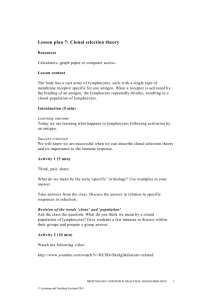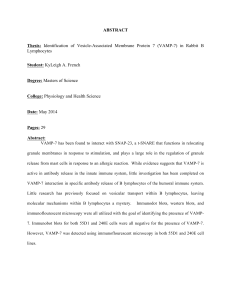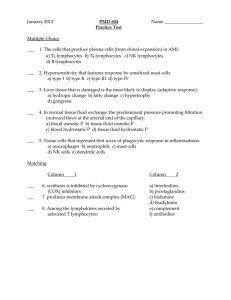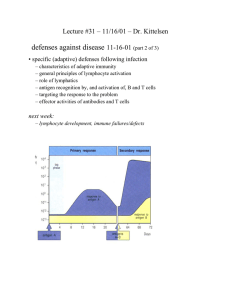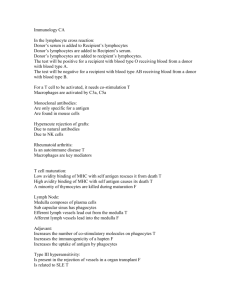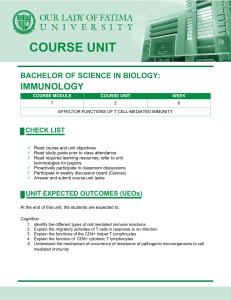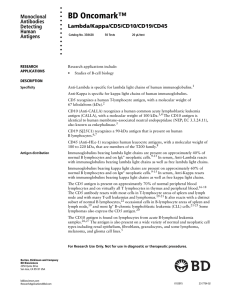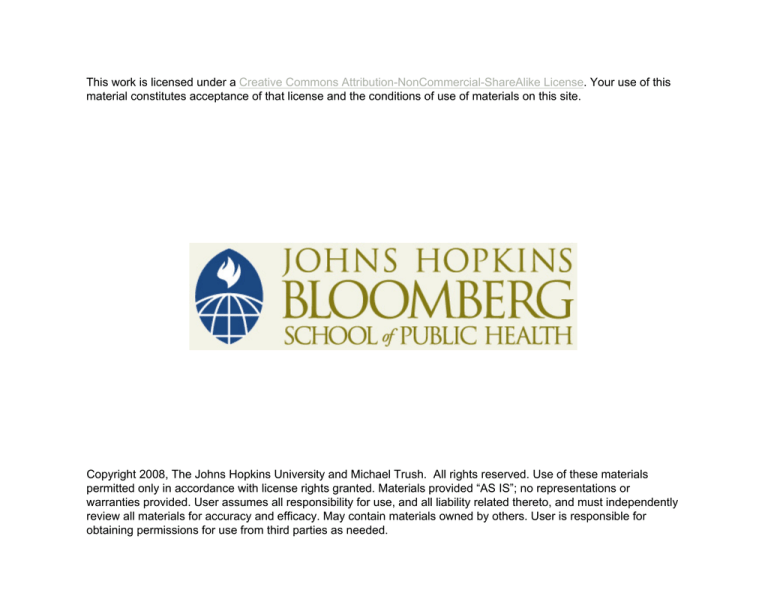
This work is licensed under a Creative Commons Attribution-NonCommercial-ShareAlike License. Your use of this
material constitutes acceptance of that license and the conditions of use of materials on this site.
Copyright 2008, The Johns Hopkins University and Michael Trush. All rights reserved. Use of these materials
permitted only in accordance with license rights granted. Materials provided “AS IS”; no representations or
warranties provided. User assumes all responsibility for use, and all liability related thereto, and must independently
review all materials for accuracy and efficacy. May contain materials owned by others. User is responsible for
obtaining permissions for use from third parties as needed.
Section B
The Basics of an Immune Response
Lymphocyte Cloning
Lymphocytes are
clonally distributed
with respect to
antigen specificity
Each clone of
lymphocytes has
unique membrane
receptor for antigen
10
Interaction of Lymphocytes
With Antigen Results in Clonal Expansion
11
Daughter Cells Resulting
from Clonal Expansion
They either
remain as
long-lived
memory
cells or
differentiate
into effector
cells
12
Memory Cells and Effector Cells
Memory cells
– Provide for an accelerated and more
vigorous response following a second
encounter with the same antigen
Effector cells
– Either directly or indirectly cause the
elimination of antigen
13
Two Main Types of Lymphocytes
T Lymphocytes
B Lymphocytes
Memory
Specificity
Distinguish Self
From Non-Self
14
Lymphocyte Maturation
15
Diversity of T Lymphocytes
16
T Effector Cells
Cytotoxic T
Lymphocytes
Destruction of
virus-infected host
cells
Cytokine producing
cells
Augmentation of
macrophage
function and other
aspects of
protective
immunity
17
18
Cytokines Produced by the Two Main Classes
of TH Cells Exert Reciprocal Antagonistic
Effects on IgE Antibody Production
19
The End-Cell of B Lymphocyte
Differentiation Is the Plasma Cell
20
Antibody Structure
21
Functions of Antibodies
Lysis with complement
Opsonization for phagocytosis
Neutralization of toxins
Protection of mucosal surfaces
Transplacental transfer
22
General Schematic of Antigen
Processing and Presentation
23
T Lymphocytes Recognize Processed
Antigen Presented with “Self” (Major
Histocompatibility Complex) Molecules
24
TH Cells and the Regulation of
IgE Antibody Production
25

